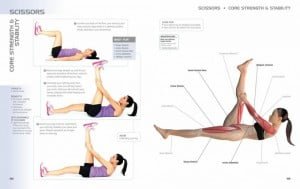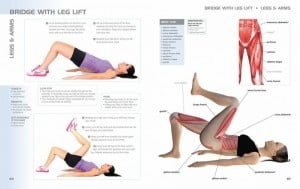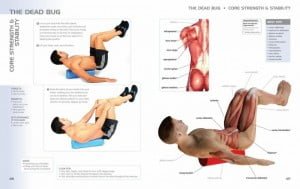The Anatomy of Cycling
The Anatomy of Cycling
Hands up if you think cycling is all about leg strength. If you do, go to the back of the class.
This is a common misconception among many riders, and can be dangerous as a primary focus on leg strength can cause an imbalance in the body, which leads to injury. In fact, core and upper body strength can be looked upon as the inverted foundation that supports the power you push through your legs. A lack of core and upper body strength can lead to injury and discomfort when riding your bike, especially when climbing, but even if you don’t experience any pain, improving your flexibility and upper body strength will pay dividends in your riding ability and speed.

Core strength and stability can be increased by movements such as the scissors
Cyclists are notoriously bad at stretching, and when you think of the repetitive pedalling and fixed, hunched position that is maintained on a bike, sometimes for hours at a time, it can be a recipe for disaster. However a new book entitled, ‘Anatomy of Cycling, a cyclist’s guide to strength, flexibility and conditioning’ by Jennifer Laurita, aims to address these issues and allow riders to train in a more holistic way.

Improve spinal and pelvic stability with a bridge and leg lift
The book is split into five main sections that focus on flexibility, legs and arms, core strength and stability, balance and posture and, finally, workouts. Each section devotes two pages to each movement and is clearly illustrated and explained. The format follows a step by step explanation of the exercise, supported by photographs accompanied by larger anatomical illustrations detailing the muscles targeted by the exercise.
Side notes also detail the benefits, things to think about and things to beware of when doing the exercise. It’s beautifully illustrated and is clear and concise enough for even the most novice of riders, but also has sufficient depth for more experienced cyclists to delve deeper and explore how to get the most from each exercise and apply it to their riding.

Improve your core stability with the dead bug
It is this clear and uncluttered format of the book that ranks it above others with a similar theme but for me the winning point is that all the exercises contained within its cover can be completed with simple equipment. Too often, these books require access to a gym or expensive equipment. For the average and often time-crunched cyclist, this luxury usually isn’t an option. To complete each of the 66 stretches or exercises in the book you only require access to a chair, a bosu balance trainer, a medicine ball, a swiss gym ball and a foam roller; all of which are inexpensive and easy to store, providing you with your own home gym.
Scot Tares
Anatomy of Cycling by Jennifer Laurita
Published by Bloomsbury www.Blomsbury.com
ISBN 978-1-4081-8769-2
Paperback – 160 pages





